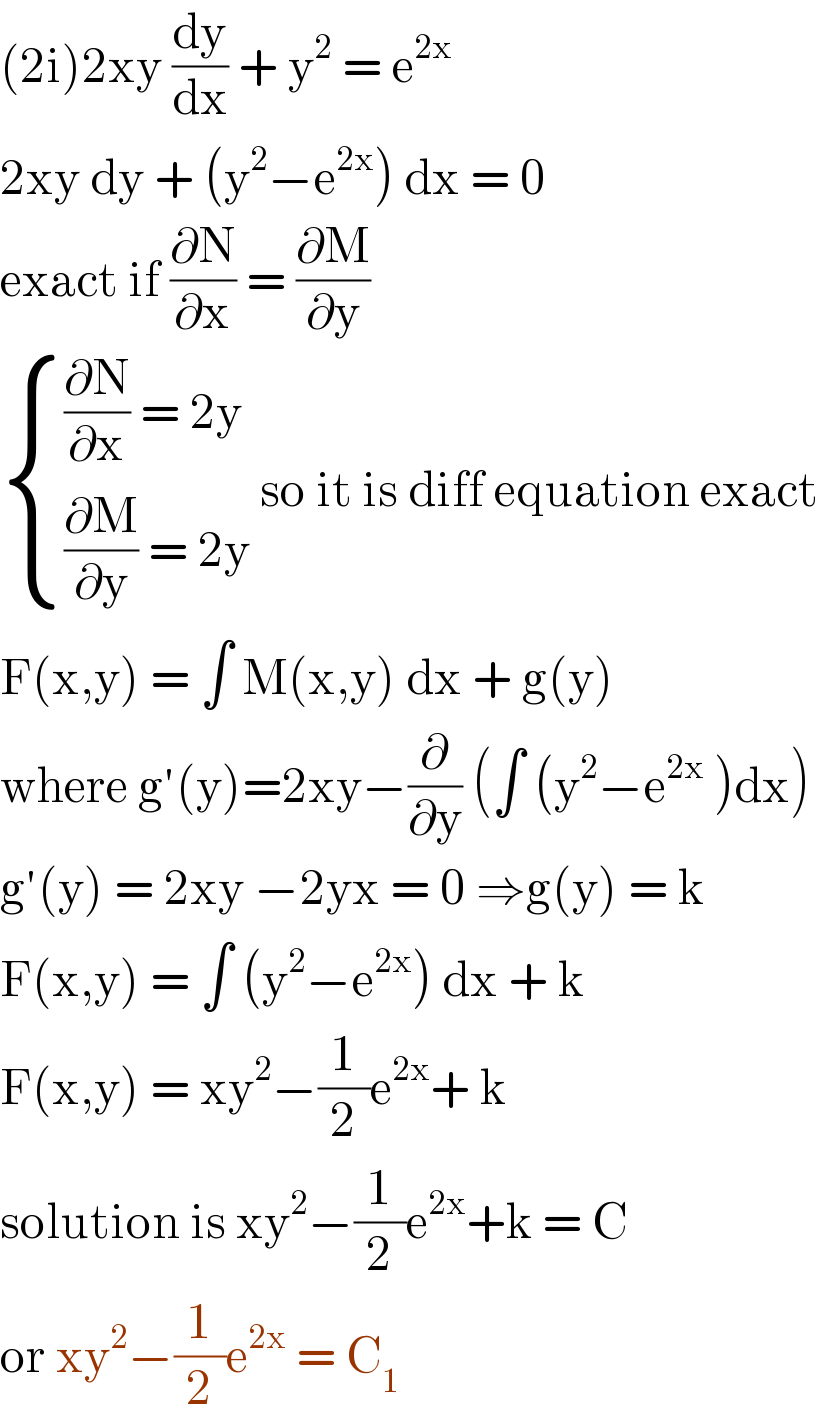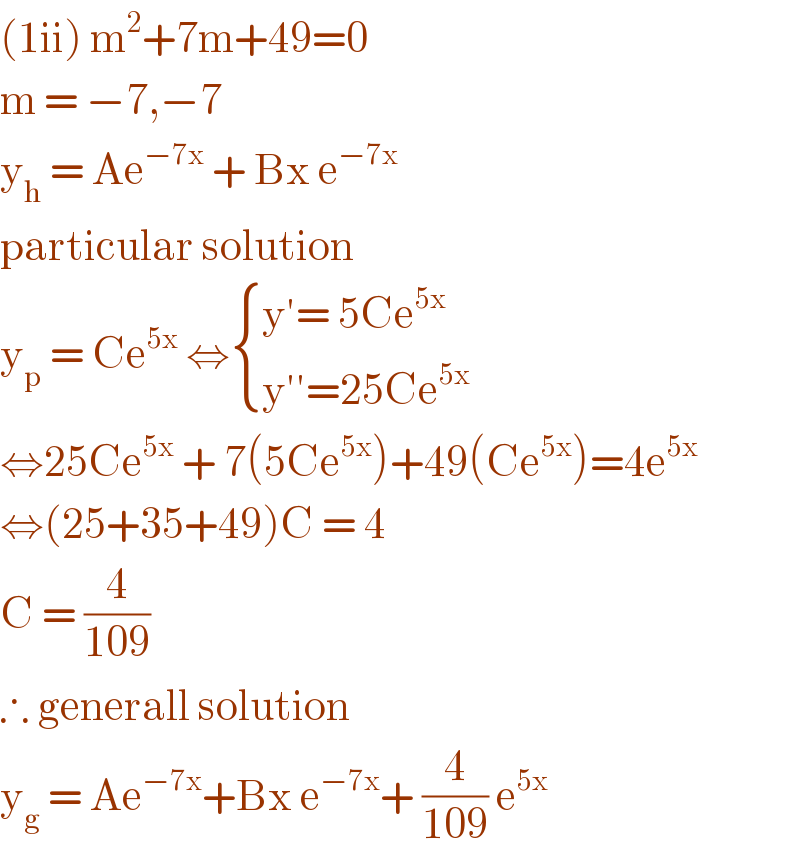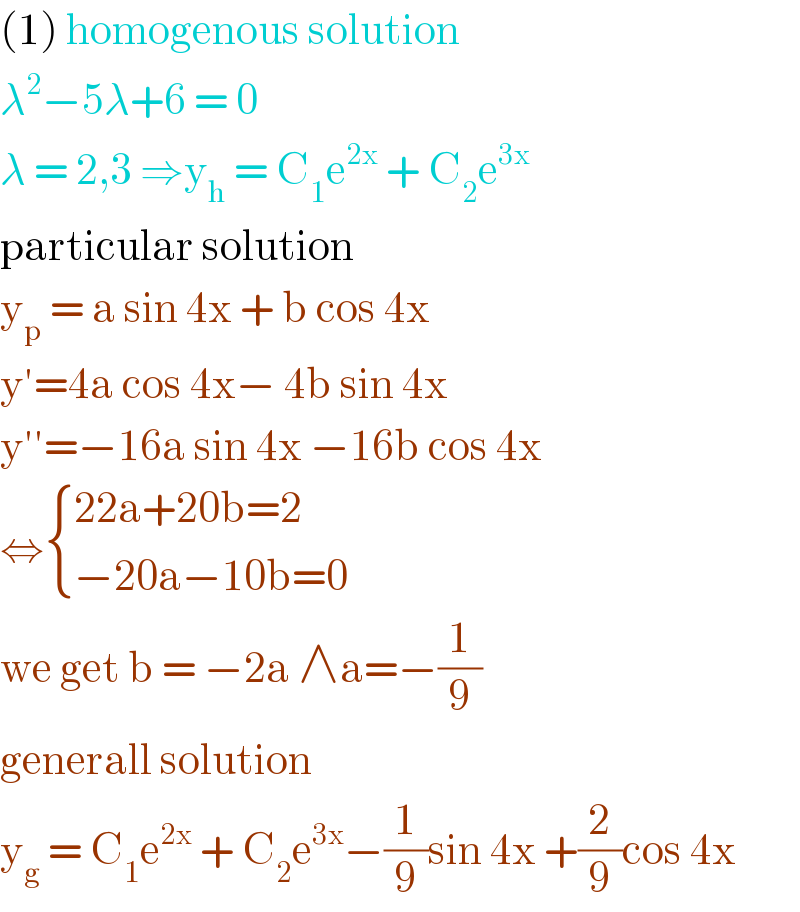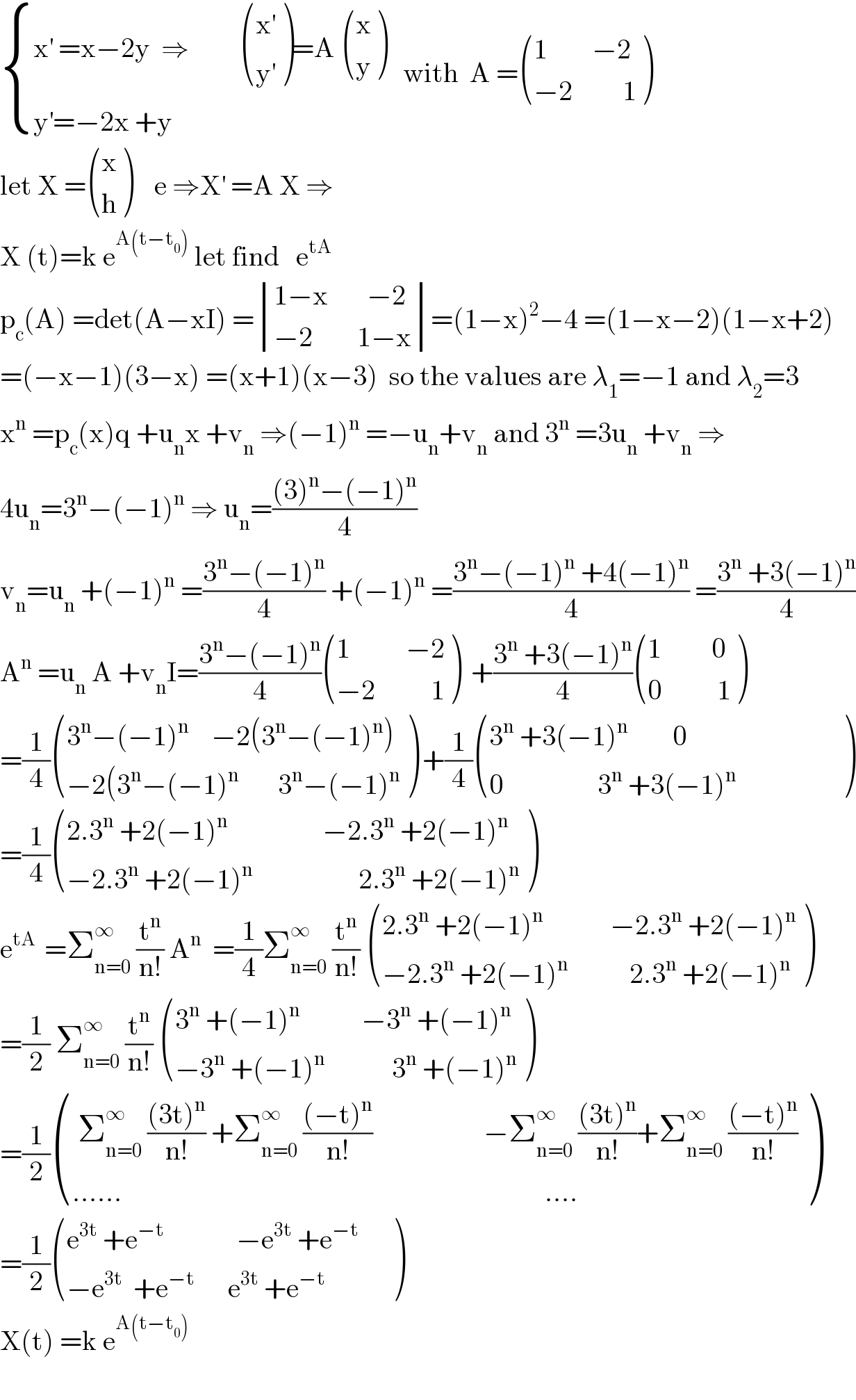
Question and Answers Forum
Previous in Differential Equation Next in Differential Equation
Question Number 97866 by me2love2math last updated on 10/Jun/20

Commented by me2love2math last updated on 10/Jun/20

Commented by bobhans last updated on 10/Jun/20

Commented by bemath last updated on 10/Jun/20

Commented by me2love2math last updated on 10/Jun/20

Answered by john santu last updated on 10/Jun/20

Answered by smridha last updated on 10/Jun/20
![(6)s^2 x(s)−sx(0)−x^′ (0)−4x(s)=((2s)/(s^2 +4)) x(s)[s^2 −4]−3s−4=((2s)/(s^2 +4)) x(s)=((2s)/((s^2 −4)(s^2 +4))) +(4/(s^2 −2^2 ))+((3s)/(s^2 −2^2 )) x(s)=(s/4)[(1/((s^2 −2^2 )))−(1/((s^2 +2^2 )))]+2[(2/(s^2 −2^2 ))] +3[(s/(s^2 −2^2 ))] now take L^(−1) both sides we get x(t)=(1/4)cosh(2t)−(1/4)cos2t+2sinh(2t) 3cosh(2t) so the solution: x(t)=((13)/4)cosh(2t)−(1/4)cos(2t)+2sinh(2t)](Q97878.png)
Commented by smridha last updated on 10/Jun/20
![or ans should be like that x(t)=((13)/8)[e^(2t) +e^(−2t) ]+[e^(2t) −e^(−2t) ]−(1/4)cos(2t) =((21)/8)e^(2t) +(5/8)e^(−2t) −(1/4)cos(2t)](Q97880.png)
Answered by mathmax by abdo last updated on 10/Jun/20

Answered by mathmax by abdo last updated on 10/Jun/20
![4) let solve by laplace transform y^(′′) +3y^′ +2y =sin(2x) ⇒L(y^(′′) )+3L(y^′ )+2L(y) =L(sin(2x)) ⇒ x^2 L(y)−xy(0)−y^′ (o) +3(xL(y)−y(0))+2L(y) =L(sin(2x)) ⇒ (x^2 +3x+2)L(y) −(x+3)y(o)−y^′ (0) =L(sin(2x)) L(sin(2x) =∫_0 ^∞ sin(2t)e^(−xt) dt =Im(∫_0 ^∞ e^(2it−xt) dt) ∫_0 ^∞ e^((−x+2i)t) dt =[(1/(−x+2i)) e^((−x+2i)t) ]_(t=0) ^∞ =((−1)/(−x+2i)) =(1/(x−2i)) =((x+2i)/(x^2 +4)) ⇒ L(sin(2x))=(2/(x^2 +4)) (e)⇒(x^2 +3x+2)L(y) =y(o)(x+3)+y^′ (0)+(2/(x^2 +4)) ⇒ L(y) =((x+3)/(x^2 +3x+2))y(0) +((y^′ (0))/(x^2 +3x+2)) +(2/((x^2 +3x+2)(x^2 +4))) ⇒ y(x) =y(0)L^(−1) (((x+3)/(x^2 +3x+2)))+y^′ (0)L^(−1) ((1/(x^2 +3x+2)))+2L^(−1) ((1/((x^2 +3x+2)(x^2 +4)))) f(x) =((x+3)/(x^2 +3x+2))=((x+3)/((x+1)(x+2))) =(x+3)((1/(x+1))−(1/(x+2))) =((x+3)/(x+1))−((x+3)/(x+2)) =1+(2/(x+1))−(1+(1/(x+2))) =(2/(x+1))−(1/(x+2)) ⇒ L^(−1) (f) =2e^(−x) −e^(−2x) g(x) =(1/(x^2 +3x+2)) =(1/(x+1))−(1/(x+2)) ⇒L^(−1) (g) =e^(−x) −e^(−2x) h(x) =(1/((x^2 +3x+2)(x^2 +4))) =(1/((x+1)(x+2)(x−2i)(x+2i))) =(a/(x+1)) +(b/(x+2)) +(c/(x−2i)) +(d/(x+2i)) a =(1/((−1−2i)(−1+2i))) =(1/((1+2i)(1−2i))) =(1/5) b =((−1)/((−2−2i)(−2+2i))) =(1/((2+2i)(2−2i))) =(1/(4×2))=(1/8) c =(1/((2i+1)(2i+2)4i)) =(1/(4i(−4+4i+2i+2))) =(1/(4i(−2+6i))) =(1/(−8i−24)) =((−1)/(8i+24)) d =(1/((−2i+1)(−2i+2)(−4i))) =.... L^(−1) (h) =a e^(−x) +b^(−2x) +c e^(2ix) +d e^(−2ix) →at form a e^(−x) +be^(−2x) +αcos(2x) +βsin(2x) so the general solution is y(x) =ae^(−x) +b e^(−2x) +αcos(2x) +βsin(2x)](Q97903.png)
Answered by mathmax by abdo last updated on 10/Jun/20

